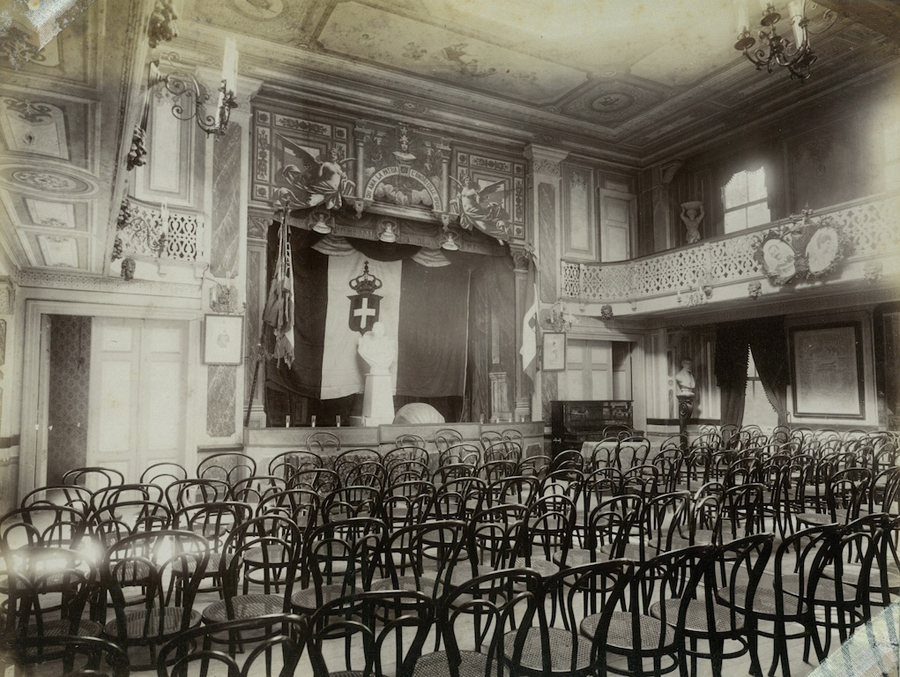
The Interviewees
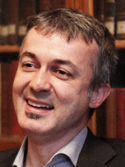
Interview with Sedat Bornovalı, June 2017 - Türkçe
1- You are an art historian and professional tourist guide, yet you are managing a major restoration and archaeological investigation in the former Casa Garibaldi Italian Cultural Centre of Istanbul. How did this come about?
If you consider these disciplines, they are all in a similar field. As I like historical buildings I trained myself in this area. I like to share this love with other people and I started being a tour guide while I was a student. Again for the same reason, following the suggestion from the former Italian Istanbul Consul General Gianluca Alebrini, I started investigations on this important building and in time this restoration project was born.
2- Can you tell us the brief history of Istanbul Italian Society’s Garibaldi House (Società Operaia Italiana di Mutuo Soccorso) and how you became the first non-Italian member of this organization?
Società Operaia was established as a workers’ association in 1863. However shortly after its foundation the necessity of being a worker was relegated and became an association meeting under an Italian identity. In those days it operated like a mutual aid society. The money accumulated from subscriptions was distributed amongst the less well-off members. 150 years after its foundation it is now one of the landmarks of Istanbul and Beyoglu, a treasure belonging to two nations. I do not have the authority to speak on behalf of the association but I hope that even under a separate status (such as ‘friends of Società Operaia’ etc.) many Turkish citizens could express their love of Italy and this history under this aegis.
3- You received the Knight of the Italian Republic / Order of Merit, back in 2008, way before this project. For what work was this for?
I don't think it was given for a single project I worked on. At the time I was not even 40. I would consider the projects I did till that date were not significant. I think the reason behind this decoration was more an acknowledgement of all my various efforts to build up Italian and Turkish friendship whose zeal was clearly apparent to those who made the decision.
4- Can you tell us about decisions that are taken in restoration, such as how to decide to what level the surfaces should be taken back to and have you faced any legal obstacles?
Such studies are unfortunately unpredictable. For this reason it is difficult to answer this question with a general criteria. As much as possible we make decisions based on group consensus. If to protect one element the other has to be lost, the decision of preservation is based on the most valuable and the rarest. For pieces we cannot preserve in situ we aim for a museum type of display system. On legal grounds we have not experienced any problems. The Heritage Protection Groups aim is preservation. We have the same aims. For that reason our thinking has always been in harmony.
5- I believe you have partly excavated 2 unknown Byzantine period graves at the subsoil basement of the building. Do we know anything more about what level of habitation there was in Beyoğlu this far back?
The number of these graves we have discovered is now close to 10. The excavations were conducted by expert archaeologists from the Istanbul Archaeology Museum based on our doubts that these were archaeologically significant discoveries. We were able to excavate in a very narrow area. Our building foot-fall is relatively small. For that reason we couldn’t do any investigations beyond this area. There were possibly buildings from that era but we didn’t discover any remains and we do not know the distance to these graves. Even though for now the findings are limited to the cemetery the existence and the early age of 4 century AD is clearly very significant.
6- What will be the future use of this building and will some of the artefacts brought to light be displayed within the building?
The association used this building as a social centre in the past and it will continue with the same vision. With the agreed protocol the activities of the association will be maintained and at the same time TÜRSAB [Association of Turkish Travel Agencies] would have a voice in the use of the building. It will be open to visits and a variety of social activities could be part of its remit. Compared to its past it will be more open to visitors and tourism.
7- Would you welcome managing a future similar restoration projects if an invitation was forthcoming? Do you think Istanbul could do more to appreciate its rich heritage in the buildings of Pera and district and do you think the local civil pressure groups are organised enough against the inexorable demands of developers and city planners to modernise?
Without a doubt each invitation brings a sense of self-pride. These invitations from such eminent people only increases this pride. In recent times Istanbul has become a bit more knowledgeable but there is much to do for protection. I feel the public pressure groups should show their effort from the strength of better knowledge. Excluding some very special examples buildings could be developed and adapted for modern uses. If protection projects are flexible enough for some steps for these buildings to find a new lease of life and contribute to the living city then I think it will be easy for this vision and those seeking modernisation to find the common ground.
8- You are a member of the Turkish Archaeological Sites and Museums Consulting Committee since 2010. Can you give us an indication of the some of the decisions this grouping has advised on for the purposes of saving sites and heritage?
In this consulting committee we deal with security, taking advantage of technology, ease of access for visitors and similar considerations that would be relevant to these locations sensitively protected and monitored by the protection bodies.
9- Is there a project to record some of the memories and oral history surrounding the Operaia Society in conjunction with this restoration? If not would you welcome such a move?
There is such a project. Indeed I can state there is more than one project. The field of film and interviewing is completely outside my education and knowledge. For this reason I have decided not to conduct these works but assisting persons or groups who approach us with that request. Examples of such film projects include the one conducted by the Italian Lycee Association and a project where I did the curation of Association furniture as a mini museum some exhibited at the Italian Consulate. In addition the architect Francesca Faiella created a film through combining range of interviews and promoting our Association together with an exhibition that was shown in a number of cities starting from Genoa.
10- Do you have future personal plans post this project?
In actual fact even this project was not in my plans. Multiple plans usually lead to multiple revisions. First I would like to see this project to become fruitful and long-term by all involved parties. I think the rest will follow on its own accord. Thank you for this opportunity.
11- (question added July 2019) What was the chief motivation for you to write this book on ‘The Bosphorus: An Illustrated Story’. Were there any surprises for you in your research?
Amongst my main areas of research are the history of Italians and Pera. Life continued in Pera in the winter and in the Bosphorus during the summer. Life, including hotels, moved to the Bosphorus. We also see many of the same important people we know from Pera and the same architects who also left lasting legacies on the Bosphorus. So all my work has always directed me to the Bosphorus. I had a lot of visual material that I had collected from personal interest. I thought that publishing them together would be a nice contribution to the literature.
Of course I also came across surprises which made me very happy: Almost every research I did concerning the issues to make the small odd additions brought me again to unpublished materials. Even just with Raimondo d’Aronco’s I found in the Ottoman archives multiple autographed architectural drawings. Unfortunately none of these beautiful works planned for the Bosphorus were built. In addition, many researchers who heard of my work contributed with the documents they had, resulting in a much richer result than the text I intended to first publish.
More information on this book:
Interview conducted by Craig Encer
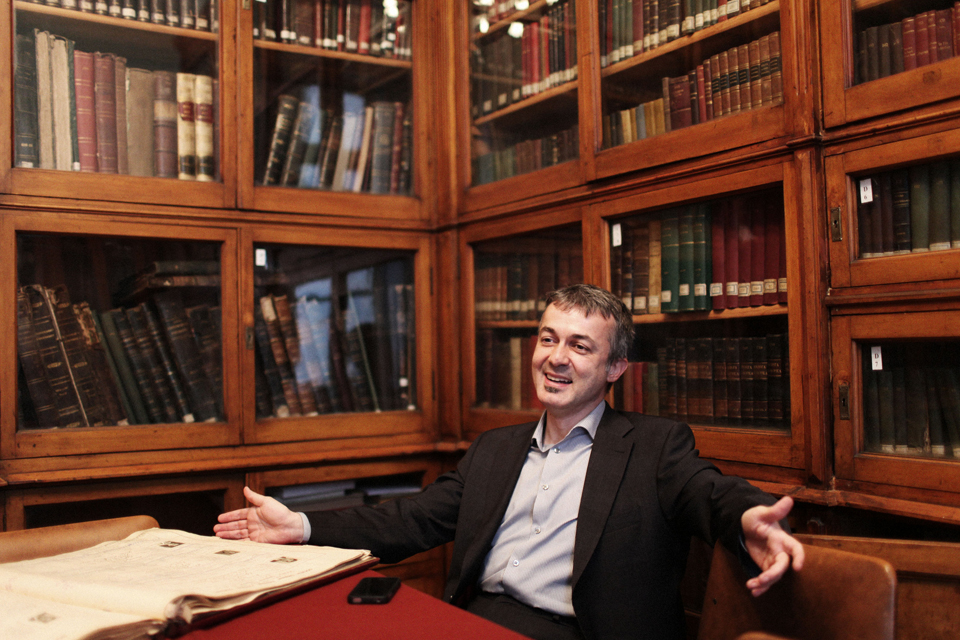
Sedat Bornovalı surrounded by some of the archives of the Association.
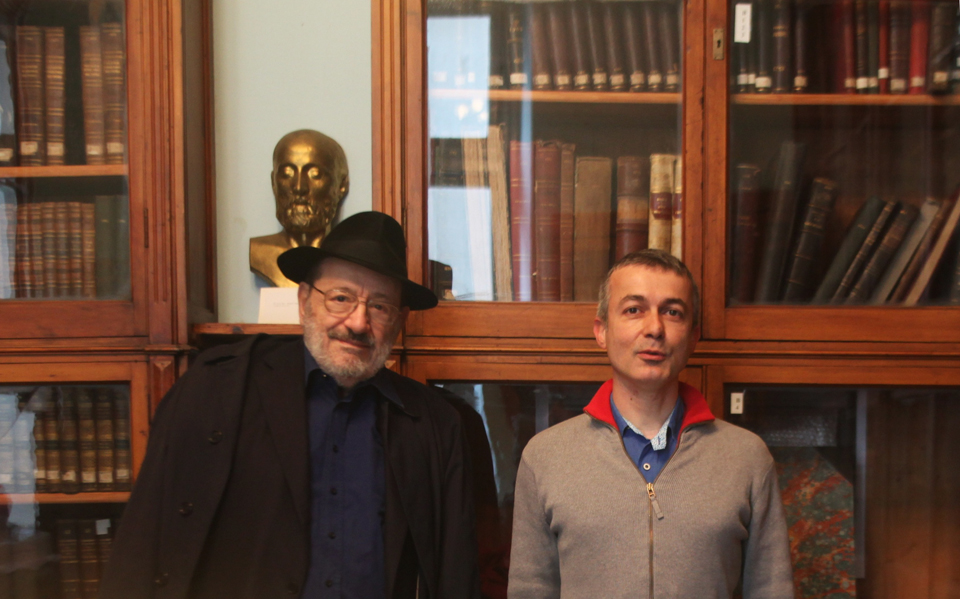
The famous Italian author Umberto Eco, whom we lost recently, had also visited the Garibaldi building.
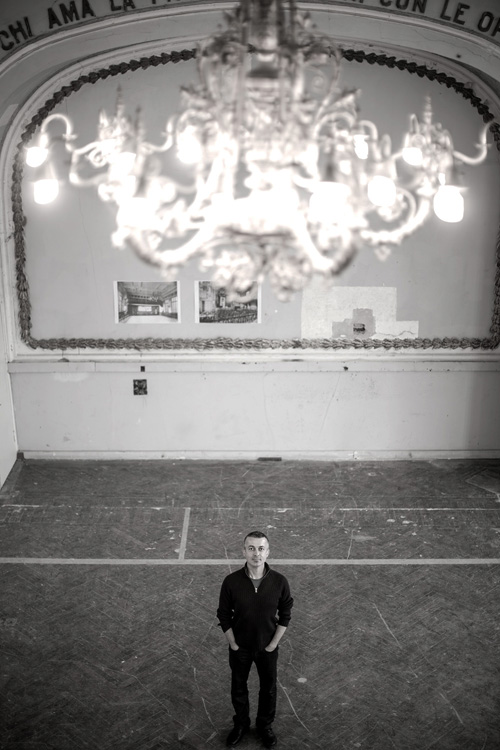
Pre-restoration theatre of Casa Garibaldi.
